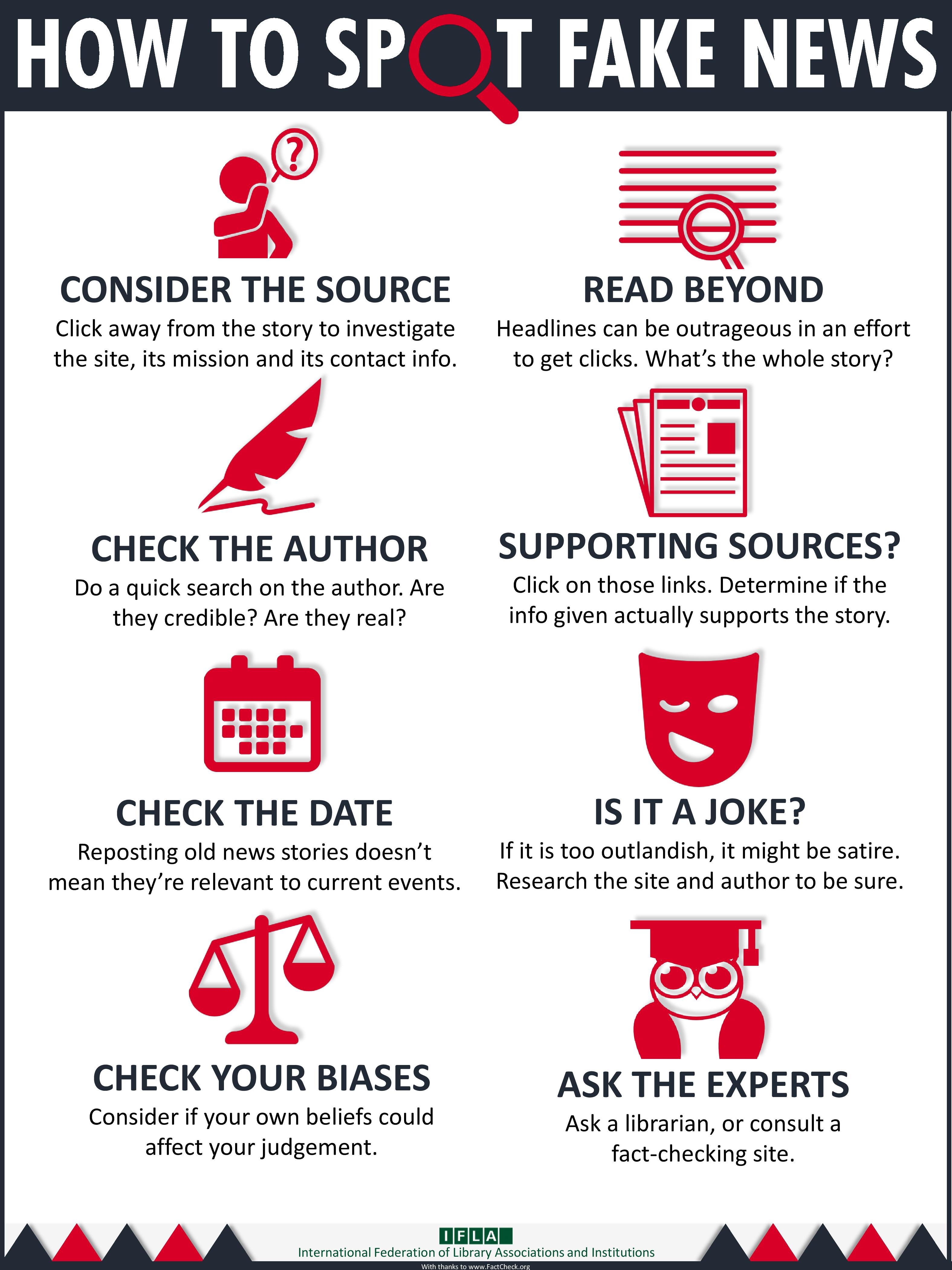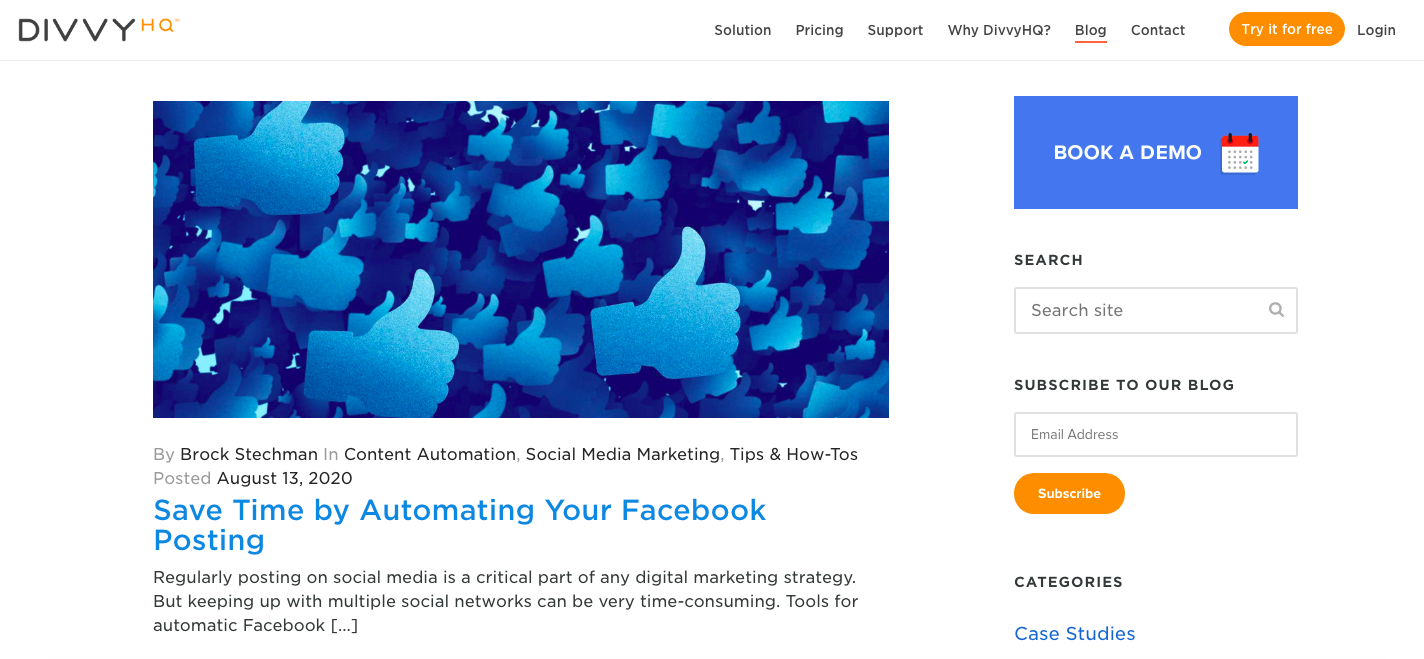
To establish your place as a thought leader and trustworthy authority in your industry, you need to publish original, high-level content. But writing effective thought leadership content is no easy task.
Taking the time and effort to learn how to create high-authority content is worth the effort. A survey of 1,000 senior executives found that, despite their busy schedules, they still dedicate up to five hours a week to reading thought leadership articles and white papers.
Just imagine what you could achieve with a dedicated audience of high-value potential clients taking several hours to listen to what you have to say each week.
Great thought leaders are not necessarily great writers. Luckily, thought leadership is a skill that can be learned and perfected, with practice.
There’s no better time to get started than the present.
Quick Takeaways:
- Thought leadership content differs from standard blog content because it includes unique ideas and viewpoints that your audience can’t find anywhere else – it’s more than just information.
- Becoming a thought leader takes time, effort, and practice.
- You don’t necessarily have to be a skilled writer or videographer to find success with thought leadership content. However, you need to be good at creating content in at least one format on at least one platform.
 PS – I put together these 10 tips for optimizing your content marketing. Watch Now!
PS – I put together these 10 tips for optimizing your content marketing. Watch Now!
Brainstorm Topics
The first stage of creating great thought leadership content is choosing the right topics to write about.
When choosing these topics it’s important to keep in mind the factors that will result in success:
- They should be relevant to your audience or the audience of the publication you’re submitting it to.
- They should help your clients, customers, or peers to overcome challenges they may be facing, or make their life better in some way.
- They should provoke thoughts, ideas, or discussions among your audience
- You should be able to back up your talking points with relevant research from reputable sources.

Nobody is an authority on everything, so the narrower you can make your subject focus, the more credible you’ll seem – at least until you build up trust and reputation. It’s also much better to go deeper into subjects and cover them thoroughly than just to skim the surface of lots of unrelated topics.
Choose a few topic categories to specialize in when you’re creating content. These categories should obviously be related to the industry you’re in but they don’t have to be directly related.
For example, if you frequently use mindfulness in work to be a better leader and more successful in business, this could work as an interesting niche in which to create thought leadership content.
At Marketing Insider Group, my areas of passion are content marketing, marketing strategy, event marketing, and employee activation.
Almost all the content I create fits under the umbrella of one of these categories. This has not only helped me make a name for myself as a thought leader in these areas but has also given me a starting point when it comes to brainstorming topic ideas.
Ideas can come from many places. Make sure you’re never short of inspiration by reading plenty of content yourself. Industry news sites, social media (particularly LinkedIn), forums, and relevant blogs will keep you up to date with the latest trends and may well spark some new content ideas. You can also set a Google alert with industry keywords to be notified when new content is published.
You’ll also probably find that content ideas come to you randomly, or that a conversation you have with someone gives you content inspiration. Make sure to take note of these ideas so you can use them at a later date.
 PS – Check out our latest case study that shows how we helped one company double their leads!
PS – Check out our latest case study that shows how we helped one company double their leads!
Do Your Research
One of the things that makes thought leadership content stand out from generic blog content is that it is thoroughly researched and fact-checked.
Whatever information you include in your articles, it’s important that you have the data to back it up from reputable sources.
Your research should provide evidence that demonstrates the validity of what you’re saying. But a blog post simply compiling data from several different sources is not thought leadership. You need to weave a narrative around the data and explain what it means, rather than simply presenting it.
Ideally, thought leadership content is based on original research conducted by the person or organization publishing it, however, this isn’t always possible.
If you don’t have the resources to do your own research, make sure you have something interesting to say about the information and data you’ve sourced from a third party.
It’s vital that the information presented in thought leadership content is accurate. Inaccurate facts or using unreliable sources could damage your reputation permanently. So make sure to double-check your facts and leave out any references that you’re unsure of.

Be Different
One of the defining characteristics of thought leadership content is that it offers a unique take on a subject, idea, or problem.
This doesn’t mean that all your thought leadership content ideas have to be completely unique. There’s absolutely nothing wrong with covering a trending topic or revisiting an idea that has proved popular.
However, you should make sure you approach the topic from your own unique viewpoint and angle.
Think about thought leaders Tony Robbins and Dave Ramsey. The topics they talk about in their respective areas of expertise (personal development and personal finance) are the same topics that have been covered countless times before. But millions follow them as thought leaders because their approach and style are so unique.
 Hey! Check out our weekly blog content service to grow your website traffic and leads!
Hey! Check out our weekly blog content service to grow your website traffic and leads!
Simplify Your Language
Individuals who are new to writing for an online audience tend to use formal and over-complicated language. This may be because they’re used to writing technical or academic documents or in an attempt to sound more knowledgeable and intelligent.
Either way, using long words and sentences full of corporate jargon results in content that is off-putting and difficult to read.
Keeping your sentences short and sweet and using simple, conversational language will allow your knowledge and confidence to shine through.
Build Relationships with Your Audience and Peers
Being a successful thought leader online is more than just publishing articles.
It’s also important to take the time to communicate with your readers and demonstrate you value them. This means reading and responding to comments and maintaining an active presence on social media.
Communicating with your audience in this way is also an effective way to improve your content. By listening to your readers’ thoughts, opinions, suggestions, and challenges, you can create content that better fits their needs.
It’s equally important to build relationships with other thought leaders in your industry. Don’t see your peers as competitors, but rather allies. By leaving comments on other blogs and sharing other great content you can make valuable connections and grow your audience.
Consider Outsourcing
Most business leaders think that they have to create their own content from start to finish for it to be a true reflection of their ideas and opinions. This is not necessarily true. Outsourcing content to a multi-skilled content marketing agency like ours does not have to mean compromising on quality or losing your unique voice; we can take an article outline and notes you provide and use these “bones” to create a fully fleshed out high-quality piece of content.
Outsourcing content can certainly save you time, but it can also ensure the quality of your thought leadership content. Writers, after all, are experts in content creation and by working in partnership you can combine your skills and insights to come up with something really special. Good writers will also be able to emulate your writing style and voice so that your brand voice and messaging comes across seamlessly to readers, without them feeling that non-involved people were involved in the creation of your content.
And of course, what readers love, search engines love more.
Amazing Examples of Thought Leadership Content Marketing
As the volume of online content grows daily, it can be difficult to make sure your voice is heard over the noise. Thought leadership content marketing is one of the most effective ways of establishing your name and company as an authority in your industry.
Thought leadership marketing means going beyond the same blog posts and regurgitated ideas that everyone seems to be publishing. By putting extra time into developing high-quality content with original ideas and opinions, you can clearly stake your position as a leader rather than a follower.
Thought leadership content can help your company to get more press exposure, attract new business opportunities, and convert leads. LinkedIn research shows that 58% of decision-makers read at least an hour of thought leadership content each week. 60% also said that this type of content had directly convinced them to buy a product or service they hadn’t previously considered. The best thought leadership examples build trust by focusing on delivering value to the reader, not on showcasing products.
One of the best ways to get your head around this type of content is by reading some excellent examples by other organizations. Aside from amazing digital experiences, these examples publish consistently and engage their readers at every stage of the buying journey.
1. Nutanix The Forecast

The enterprise cloud services market is extremely crowded, so it’s important for providers to differentiate themselves from the competition.
Cloud computing firm Nutanix firmly establishes its position as an industry leader with its online magazine, The Forecast.
The Forecast publishes industry news and ideas about the people, trends, and technologies that are shaping the cloud computing industry.
The content on The Forecast is organized into categories including:
- Technology (news and stories on cloud technology, hybrid IT, infrastructure, and data management)
- Business (discussion and guides on management, digital transformation, and leadership)
- Industry (trends and stories of how real companies are using cloud technology)
- Profile (biographies and interviews with key individuals from the Nutanix global team)
As well as written content, there’s a separate section for videos and a podcast exploring some of the ideas discussed in articles in a conversational audio format.
Going beyond the bland technical content so many IT brands publish, Nutanix has been successful in publishing original and innovative content that’s appealing to a wide range of audiences, despite being a very narrow niche.
2. First Round Review

Venture capital firm First Round Capital launched its blog, First Round Review, with the aim of sharing their extensive pool of knowledge and experience with technology entrepreneurs.
The company takes a different approach to other venture capital firms. Rather than collecting a portfolio of companies, they see themselves as building a community of entrepreneurs.
First Round Review reflects this approach by sharing ideas, best practices, and advice from the community to help technology entrepreneurs can learn to build better companies.
By focusing on interviews, business insights, advice and real experiences from real companies, First Round has experienced a hugely positive response to their blog including a massive increase in visitors, thousands of shares, and press attention from publications including Forbes, The Atlantic, and Fast Company.
I have to personally thank the First Round Review for helping me educate dozens of startup founders on what content marketing really is and why it’s beneficial to them.
3. Autodesk’s Redshift

Software company Autodesk named their blog after a scientific phenomenon relating to objects traveling through space. As the universe continues to move and expand, the editorial team at Redshift also aims to continually move forward and evolve, to stay at the forefront of architecture, construction, infrastructure, manufacturing technology, and sustainability.
Autodesk’s previous blog, Line//Shape//Space, won numerous awards for its content but grew beyond its original audience of small businesses.
As the Autodesk content team recognized the need to evolve and engage with businesses of all sizes, Redshift was born.
Redshift’s focus is the future of making things, with content covering trends and predictions in the latest technologies including machine learning, generative design, and robotics.
As well as targeting a wider audience, Autodesk also wanted to personalize the content experience for each reader. Visitors can register to the site to follow particular authors and content categories, and bookmark articles to read later. An AI algorithm also automatically serves up suggested content based on previous interactions with the site.
Autodesk also features several members of its senior executive team as Redshift authors in their “Inside My Design Mind” series. By securing buy-in from the executive team as influential “content marketing champions”, the content team has successfully implemented an employee advocacy program and is reaping the rewards from this approach.
4. American Express Business Class

American Express sorts the content on its Business Class Trends and Insights blog into four main categories: Managing Money, Getting Customers, Building Your Team, and Planning for Growth.
Within these content silos are several other sub-categories including topics such as leadership, productivity, company culture, strategy, cash flow, and marketing & sales.
Previously known as OPEN Forum, Amex’s blog for small businesses remains one of the oldest and most successful examples of content marketing. Rather than using content to drive sales directly, American Express decided to put its audience first by providing actionable tips, insights, and inspiration to help businesses adapt and succeed.
Rather than relying on their own team of writers, American Express outsourced to a content marketing agency like ours for stories, experiences, and advice. This relationship lends a real community feel to the Business Insights blog, as well as increasing exposure for those who contribute.
As well as written content, Business Class recently started a live video series, “Office Hours”, hosted on Instagram and YouTube. In this series, founders and executives of small businesses were invited to a Q&A session to discuss their experiences navigating the COVID-19 crisis.
5. Intermedia Cloud Communications Blog

Cloud business applications provider Intermedia uses their blog to share news, security advice, and case studies of businesses successfully deploying cloud technology to improve performance.
By focusing their efforts on topical and trending topics, the Intermedia content team has been successful in publishing articles that their audience wants to read and share.
Content such as “New Study Finds More Than Half of U.S. SMB Owners Believe Working Remotely is Here to Stay Post-Pandemic” and “How to Manage Live Attendee Chat During Webinars” tapped into the interests and concerns of business owners and executives during the COVID-19 crisis.
Meanwhile, detailed interviews and case studies following their customers’ move to cloud services demonstrate the real-life applications of Intermedia’s products and services.
6. DivvyHQ Blog

It’s important for content marketing platform DivvyHQ to practice what they preach and demonstrate best practices in content marketing.
The DivvyHQ blog shares actionable tips, advice, and strategy for content marketing at an enterprise level, as well as sharing case studies from some of their most successful customers.
The DivvyHQ content management platform offers powerful tools for content automation and streamlining workflow but not everyone is aware these tools exist or know how to get the most out of them. By publishing helpful content on how to automate content marketing, systematize content management, and develop a better content strategy, DivvyHQ educates its audience while showcasing its own product at the same time.
7. Microsoft “Stories”

Storytelling is one of the cornerstones of successful content marketing. It’s also a tool used by some of the world’s greatest leaders and visionaries. Microsoft realized this when they decided to call their blog and news page “Stories”.
Stories publishes news on the latest Microsoft products, events, and initiatives that give a wider context to the brand beyond its core suite of products.
For example, recent stories published on the blog cover a collaboration with an environmental charity to clear plastic from oceans and rivers, a look into how software developers are helping companies pivot during the coronavirus pandemic, and insight into how people with disabilities are using accessible technology to achieve more.
A sub-publication of stories, Story Labs, hosts the blog’s long-form content with a deeper dive into topics such as accessibility, sustainability, and the future of technology.
Story Labs also features employee profiles and stories, demonstrating the wealth of talent and expertise behind the various branches of the global Microsoft brand.
8. Grow by Acorns and CNBC

Financial services is one area where people really need advice from experts who know what they’re talking about.
Micro-investment app Acorns understands this, and so set out to build a personal finance and investment blog, Grow, that’s highly authoritative as well as being educational and entertaining.
To do this, they partnered with trusted news provider CNBC and built a team of money experts with the knowledge and experience to deliver accessible educational content on how people can make the most of their money, whatever their financial position.
Only a small section of the blog is dedicated to investment. By publishing content on other financial topics such as saving, getting out of debt, and increasing income, they’re providing massive value to their audience and building trust and authority at the same time.
9. LeanIX Continuous Transformation Blog

Enterprise Architecture firm LeanIX built its Continuous Transformation platform to provide news and industry expertise from the world of continuous transformation, SaaS management, enterprise architecture ROI, cloud infrastructure, DevOps and more.
The articles cover topics like application modernization, current state architecture, API monetization and my favorite topic: how to eliminate code smells. Pew!
The company’s head of content marketing, Matthew Grant, is a long time content marketing influencer from his days at MarketingProfs and most recently held stints at Aberdeen and Aquent.
10. Zen Desk’s Relate

When it comes to providing great customer service, technology can only go so far. Customer service software company realized it could help its customers get more out of its product by providing advice and ideas for creating great customer experiences.
The Relate blog covers topics such as empathetic product design, living and working online, building relationships with others, and becoming a better company.
Zendesk wants their audience to get something out of their content – even if they don’t ever intend to become a customer – and it shows. Every article contains useful information without pushy sales messages.
Need more ideas and inspiration? Check out our list of the best content marketing examples for dozens of other blogs that are killing it with content.
If you are eager to achieve thought leadership for your brand, check out our Content Builder Service. Set up a quick consultation, and I’ll send you a free PDF version of my books. Get started today–and generate more traffic and leads for your business.
The post How to Create Effective Thought Leadership Content [Examples Included] appeared first on Marketing Insider Group.

0 Commentaires